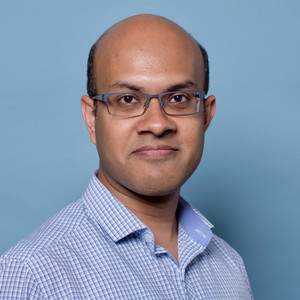ECE Seminar Lecture Series
Simplicial-aware Deep Models
Sundeep Chepuri, Assistant Professor, Department of ECE at the Indian Institute of Science (IISc), Bengaluru, India
Wednesday, October 23, 2024
Noon–1 p.m.
1400 Wegmans Hall
Simplicial neural networks (SNNs) and graph neural networks (GNNs) have emerged as one the most popular machine learning models for processing and analyzing graph-structured data. SNNs learn low-dimensi onal embeddings of simplices in a simplicial complex by aggregating features of their respective upper, lower, boundary, and coboundary adjacent simplices. GNNs may be viewed as a specialization of SNNs, wherein the feature aggregations are limited to upper-adjacent nodes. The aggregation in SNNs or GNNs is usually carried out during training. Since the number of simplices of various orders in a simplicial complex is significantly large, the memory and training-time requirement in SNNs is enormous. In this talk, we discuss a scalable simplicial-aware neural network (SaNN) model with a constant run-time and memory requirements independent of the size of the simplicial complex and the density of interactions in it. SaNN is based on pre-aggregated simplicial-aware features as inputs to a neural network, so it has a strong simplicial-structural inductive bias. We provide theoretical conditions under which SaNN is provably more powerful than the Weisfeiler-Lehman (WL) graph isomorphism test and as powerful as the simplicial Weisfeiler-Lehman (SWL) test. We also show that SaNN is permutation and orientation equivariant and satisfies simplicial-awareness of the highest order in a simplicial complex. Next, we will also discuss another scalable and parameter-free model designed to extract task-agnostic features from simplicial complex data without labels in a principled manner. Specifically, we discuss a simplicial scattering transform based on random walk matrices for various adjacencies underlying a simplicial complex. We then use the simplicial scattering transform to construct a deep filter bank network that captures high-frequency information at multiple scales. We demonstrate via numerical experiments that despite being computationally economical, these models achieves state-of-the-art performance in predicting trajectories, simplicial closures, and classifying graphs.
onal embeddings of simplices in a simplicial complex by aggregating features of their respective upper, lower, boundary, and coboundary adjacent simplices. GNNs may be viewed as a specialization of SNNs, wherein the feature aggregations are limited to upper-adjacent nodes. The aggregation in SNNs or GNNs is usually carried out during training. Since the number of simplices of various orders in a simplicial complex is significantly large, the memory and training-time requirement in SNNs is enormous. In this talk, we discuss a scalable simplicial-aware neural network (SaNN) model with a constant run-time and memory requirements independent of the size of the simplicial complex and the density of interactions in it. SaNN is based on pre-aggregated simplicial-aware features as inputs to a neural network, so it has a strong simplicial-structural inductive bias. We provide theoretical conditions under which SaNN is provably more powerful than the Weisfeiler-Lehman (WL) graph isomorphism test and as powerful as the simplicial Weisfeiler-Lehman (SWL) test. We also show that SaNN is permutation and orientation equivariant and satisfies simplicial-awareness of the highest order in a simplicial complex. Next, we will also discuss another scalable and parameter-free model designed to extract task-agnostic features from simplicial complex data without labels in a principled manner. Specifically, we discuss a simplicial scattering transform based on random walk matrices for various adjacencies underlying a simplicial complex. We then use the simplicial scattering transform to construct a deep filter bank network that captures high-frequency information at multiple scales. We demonstrate via numerical experiments that despite being computationally economical, these models achieves state-of-the-art performance in predicting trajectories, simplicial closures, and classifying graphs.
Sundeep Prabhakar Chepuri received his M.Sc. degree (cum laude) in electrical engineering and Ph.D. degree (cum laude) from the Delft University of Technology, The Netherlands, in July 2011 and January 2016, respectively. He was a Postdoctoral researcher at the Delft University of Technology, The Netherlands. He has held positions at Robert Bosch, India, during 2007- 2009, and Holst Centre/imec-nl, The Netherlands, during 2010-2011. Currently, he is an Assistant Professor at the Department of ECE at the Indian Institute of Science (IISc) in Bengaluru, India. Dr. Chepuri was a recipient the Pratiksha Trust Young Investigator award. His papers have received best paper awards at the ICASSP in 2015, ASILOMAR 2019, and EUSIPCO 2023, He was an Associate Editor of the EURASIP Journal on Advances in Signal Processing. Currently, he is an elected member of the EURASIP Technical Area Committee (TAC) on Signal Processing for Multisensor Systems, IEEE SPS Sensor Array and Multichannel Technical Committee (SAM-TC), IEEE SPS Signal Processing Theory and Methods Technical Committee (SPTM-TC), and an Associate Editor of IEEE Signal Processing Letters. His general research interest lies in the field of mathematical signal processing, statistical inference, and machine learning applied to network sciences and wireless communications.
Refreshments will be provided.

